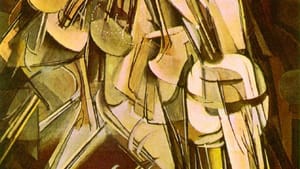Stay in the Loop
BSR publishes on a weekly schedule, with an email newsletter every Wednesday and Thursday morning. There’s no paywall, and subscribing is always free.
Joys and neuroses of the machine age
'Léger and the Metropolis’ at the Art Museum (2nd review)

Fernand Léger painted at the beginning of the 20th Century and stood at the vanguard of modern art in Paris. He believed that art should live up to the challenges of modernity and employ maximum intensity, which he achieved through Cubism in most of his paintings. Thus a cityscape, rather than just being a picture, becomes a crowded collection of figures, shapes and colors, giving the viewer the feeling of standing in a frantic urban intersection.
Léger was also interested in the use of machines as subjects, even humanizing machines with his depictions while mechanizing the human figures. This approach reminds me of Richard Weaver’s observation that modern humanity has the look of the hunted.
Léger was interested in moving pictures, and many of the contemporary works in the Art Museum's current exhibit, such as Marcel Duchamp’s Nude Descending a Staircase, depict motion in painting, a technique spearheaded by the Philadelphia painter Thomas Eakins.
Noise in music
Léger’s interest in the moving picture is perhaps most famously manifested in Ballet Mécanique, which plays on a loop in the exhibit along with several other films. The American composer George Antheil wrote the score for the ballet, but the two works weren’t seen together until the 1990s because of synchronization issues.
Antheil’s music, scored for a battery of percussion instruments (including 16 player pianos), is akin to the work of the Italian Futurists, who incorporated machines and noise into their work. The dance of the machines that flashes on the screen is fascinating, but at the end of the film a lady stops to smell some flowers, perhaps as a caution against the temptations of modernity.
The artists featured in this exhibit make use of bright primary colors, possibly the most brilliant used since the Renaissance. Léger believed that modern art liberated color, and he used this freedom to the fullest. One thinks of Olivier Messiaen’s musical harmonies, which were not functional but were chosen contingently, based largely on color. In Léger’s case, he wanted to escape the limits of the picture frame and use color to make a work of art part of the space in which it existed.
People as objects
The older I get, the more I enjoy avant-garde art from Léger’s era. Human endeavor was outdoing itself, not only in the arts but also in philosophy and science, as the work of Henri Bergson and Albert Einstein attest. Humanity was dealing with epistemological chaos, and contemporary art reflects it.
As Iris Murdoch pointed out in Metaphysics as a Guide to Morals, artists like Léger got out from under the aspect of eternity— from the suffocating notion that art was created for centuries— and instead embraced contingency and everyday life. Their critics felt they were diminishing art; but art possesses the power to elucidate the beauty from almost anything, including machines.
Still, I wish I could say that these artists did the same thing for humanity itself. In their work the person becomes an object, an automaton. The Austrian psychiatrist and Holocaust survivor Viktor Frankl famously insisted that we are not mere mechanical phenomena set into motion by the laws of physics. This idea is crucial if we humans are to maintain our freedom to choose the better over the worse, the artistic over the mundane.
This is why, even in the worst-case scenario, I’d rather embrace a delusional freedom over an honest but utterly defeated determinism. A good future, it seems to me, is one in which a beautiful humanity knows how to appreciate the mechanical, and when to walk away from it.
To read another review by Jerome Przybylski, click here.
To read a review of Léger's Ballet Mécanique by Steve Cohen, click here.
What, When, Where
“Léger: Modern Art and the Metropolis.” Through January 5, 2014 at Philadelphia Museum of Art, Benj. Franklin Pkwy. & 26th St. (215) 763-8100 or www.philamuseum.org/exhibitions.
Sign up for our newsletter
All of the week's new articles, all in one place. Sign up for the free weekly BSR newsletters, and don't miss a conversation.
